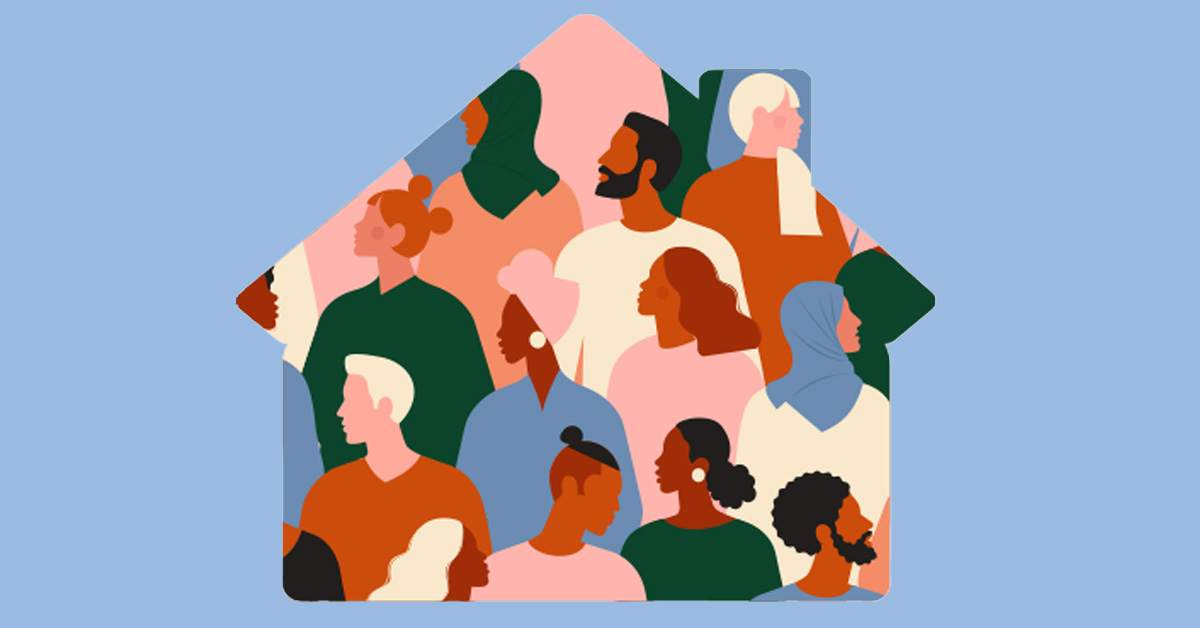Homeownership is likely the most important and most accessible way for households to build wealth in America. According to the U.S. Department of the Treasury, households outside of the wealthiest 10% derive more wealth from home equity than any other source. Homeownership has many economic benefits and has long been a central tenet of achieving the American dream.
But homeownership is not equal across racial groups in America. A Treasury report published this past November found that racial homeownership gaps have changed very little in the past 50 years. The report stated that the homeownership gap between white and Black households was the same in 2020 as it was in 1970. In second-quarter 2022, the homeownership rate for white households was 75% compared to 45% for Black households, 48% for Hispanic households and 57% for households of other races.
Fair lending practices were historically problematic, but they have improved since the Great Recession, according to the Treasury report. Recent research published in The Review of Financial Studies found no evidence of widespread discrimination in mortgage interest rates charged to consumers by race or ethnicity.
“The biggest way to move the needle on multicultural originations is moving from selling to social impact lending.”
– J. Tony Thompson III, CEO, National Association of Minority Mortgage Bankers of America
This is a nuanced topic, and racial homeownership gaps exist in part because of overall wealth gaps and disparities in access to credit among racial groups. But as communities of color grow in population, education and wealth, mortgage industry leaders are encouraging lenders and originators to consciously expand their business efforts to minority groups.
The borrowers of the future are millennials, single women and communities of color, says J. Tony Thompson III, founder and CEO of the National Association of Minority Mortgage Bankers of America (NAMMBA). Over the next five years, he says there is a $2.9 trillion purchase loan opportunity in the multicultural market, so NAMMBA is encouraging mortgage companies to lean into what the organization calls “social impact lending.”
“Lenders need to understand that the biggest way to move the needle on multicultural originations is moving from selling to social impact lending,” Thompson says. “Social impact lending is understanding the needs of the marketplace first and the communities that you serve.”
A key part of social impact lending, he says, is “doing good by doing good.” Mortgage professionals should aim to engage and educate future borrowers who may be distrustful of lenders. These are often first-generation buyers whose parents were renters, or they may have had an experience that led to distrust. “The buyers today are the kids who saw their parents get foreclosed on 12 years ago in the Great Recession,” Thompson says.
To engage in social impact lending, Thompson says mortgage professionals will need to deploy better outreach strategies. This includes changes to their marketing strategies to connect more often and via different channels — e.g., YouTube, Instagram, TikTok or blogs — to establish themselves as a trusted adviser to their communities.
Certain sectors of the multicultural market are growing at present. According to the 2021 State of Hispanic Homeownership Report from the National Association of Hispanic Real Estate Professionals (NAHREP), the Hispanic homeownership rate grew steadily over the prior seven years. And the number of Hispanic households that own their home more than doubled over the past two decades, from 4.2 million in 2000 to 8.8 million in 2021.
Marc Hernandez, a longtime NAHREP member and president of Alterra Home Loans, says that the reasons for growth in Hispanic homeownership are twofold. For one, the total Hispanic population in the U.S. has grown, and by extension the number of Hispanic homebuyers has increased. Second and most importantly, Hernandez says the number of Hispanic mortgage professionals (loan originators, processors, closers and others) has grown, which has a huge impact on Hispanic communities.
“You have to specifically target Hispanic consumers if you want to be in the Hispanic market,” he says. “Doing that requires a cultural competency, an understanding of the cultural nuances. The best way to do that is to bring in new mortgage professionals from communities of color.”
To be most successful when working with Hispanic homebuyers, Hernandez says, it’s important to understand how their economic situations fit into the traditional credit box and federal lending agency guidelines. “You have to be creative in how you take a potential borrower with six sources of income — we all know they have the capacity to repay the loan,” Hernandez says. “It’s how you put that together and package it that matters. That is the biggest challenge, but those who do it well are the most successful Hispanic loan officers in the country.”
While understanding the traditional credit box is important, Hernandez believes that the box needs to expand to accommodate more inclusive lending. “I want to highlight pushing the traditional credit box, having Fannie and Freddie understand that they need to become more flexible in their affordable lending,” he says. “We participate in the special purpose credit programs and it’s a great first step, but I think in their legal obligation of duty to serve, they have more to do.” ●
Author
-

Hannah Darden is the former industry rankings editor at Scotsman Guide Inc.
View all posts







